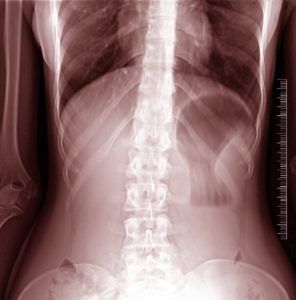
What to do in Case of a Spinal Injury?
Spinal injuries can have long-lasting repercussions for those experiencing them, especially if the proper steps aren’t taken immediately after the injury. If you’re trying to assist someone who has a spinal injury, the first thing you need to do is call an ambulance to the scene. Under no circumstances should you attempt to move them […]
Continue Reading...
Surgical Treatments For Scoliosis
Scoliosis is a condition where the spine doesn’t have the proper degree of curvature, and in cases where this abnormality is severe enough surgery may be called for. Scoliosis surgery is performed with the goal of correcting curvature of the spine that has reached 40-45 degrees depending on the age of the patient. Conditions that […]
Continue Reading...Disc Replacement
A lumbar disk replacement is a type of back or spine surgery. Your spine is made up of bones called vertebrae that are stacked on top of each other. Disks between the vertebrae work like cushions to allow the vertebrae to rotate and move without the bones rubbing against each other. The lumbar vertebrae and […]
Continue Reading...Kyphoplasty
Kyphoplasty is a minimally invasive surgery used to treat a spinal compression fracture. Spinal compression fractures occur primarily in spinal vertebrae that have been weakened by osteoporosis.
Continue Reading...Posterior Lumbar Interbody and Fusion (PLIF)
Posterior lumbar interbody fusion (PLIF) and transforaminal lumbar interbody fusion (TLIF) are two types of spinal fusion procedures that utilize a posterior (back area incision) approach to fuse (mend) the lumbar spine bones together (using an interbody fusion technique). Interbody fusion means the intervertebral disc is removed and replaced with a bone spacer (metal or […]
Continue Reading...Foraminotomy
A foraminotomy is a decompression surgery that is performed to enlarge the passageway where a spinal nerve root exits the spinal canal. The term foraminotomy is derived from the medical term for a hollow passageway—foramen. The latter half of the term foraminotomy—otomy—means to open.
Continue Reading...Laminectomy
Laminectomy is surgery that creates space by removing the lamina — the back part of a vertebra that covers your spinal canal. Also known as decompression surgery, laminectomy enlarges your spinal canal to relieve pressure on the spinal cord or nerves.
Continue Reading...Discectomy
Discectomy is surgery to remove lumbar (low back) herniated disc material that is pressing on a nerve root or the spinal cord. It tends to be done as microdiscectomy, which uses a special microscope to view the disc and nerves.
Continue Reading...Microdiscectomy
Microdiscectomy, also sometimes called microdecompression or microdiskectomy, is a minimally invasive surgical procedure performed on patients with a herniated lumbar disc. During this surgery, a surgeon will remove portions of the herniated disc to relieve pressure on the spinal nerve column.
Continue Reading...Corpectomy
A corpectomy or vertebrectomy is a surgical procedure that involves removing all or part of the vertebral body (Latin: corpus vertebrae, hence the name corpectomy), usually as a way to decompress the spinal cord and nerves. Corpectomy is often performed in association with some form of discectomy.
Continue Reading...Posterior Cervical Fusion
Posterior Cervical Fusion (PCF) is the general term used to describe the technique of surgically mending two (or more) cervical spine bones together along the sides of the bone using a posterior (back of the neck) incision. Bone graft is placed along the sides the spine bones, which over time, fuses (mends) together. PCF may […]
Continue Reading...Anterior Cervical Discectomy and Fusion
Anterior cervical discectomy and fusion (ACDF) is asurgery to remove a herniated or degenerative disc in theneck. An incision is made in the throat area to reach and remove the disc. A graft is inserted to fuse together the bones above and below the disc.
Continue Reading...Tumor resection
Tumor Resection. Surgery is often used to remove all or part of the tumor. The tumor, along with a margin of normal tissue around it, is removed when possible.
Continue Reading...
